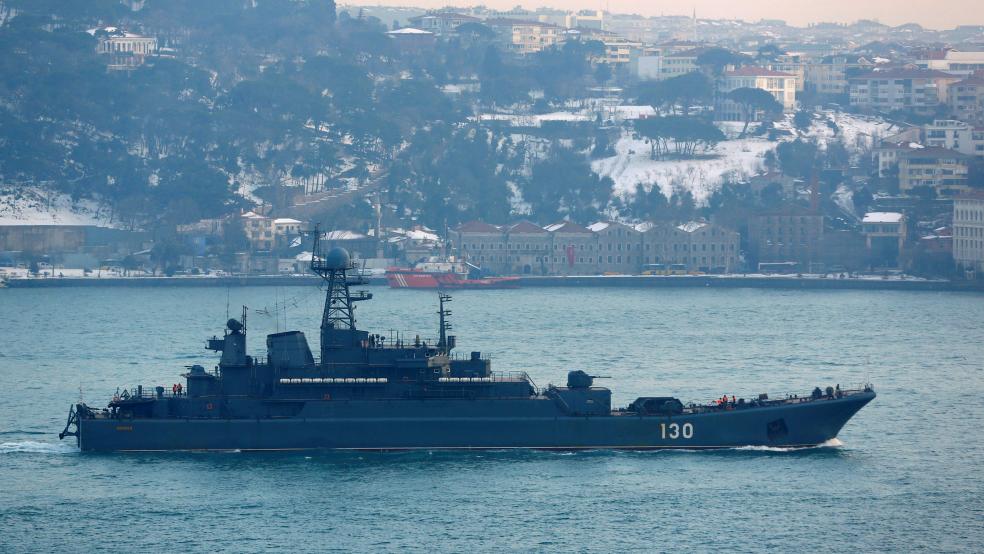As President Donald Trump pushes for an expanded Navy, both China and Russia are building new ships in what may be an emerging arms race at sea.
Related: China Just Gave Trump a 999-Foot-Long Middle Finger
China is moving forward with construction of a second aircraft carrier, according to Reuters. Unlike its first, the Liaoning, which was bought from Ukraine and retrofitted, the new ship – dubbed the Shandong, after a Chinese province – will be built locally in the port of Dalian.
Last month, in what was seen as a provocative gesture toward Taiwan and the U.S., the Liaoning and multiple escort warships cruised through the Taiwan Strait.
Relations between China and the U.S. have been strained since the president of Taiwan called Donald Trump after he was elected to offer her congratulations; Beijing viewed the exchange as a violation of the “One China” policy in place since 1979.
In separate news Wednesday, Reuters also reports that Russia is building three more nuclear icebreakers in a move to strengthen its presence in the Arctic as it vies for dominance there with the U.S., Canada, Norway and newcomer China. Reuters said Russia already has about 40 icebreakers, six of them nuclear-powered.
Related: The US Navy’s $13 Billion Answer to China and Russia
At stake in the Arctic are vast reserves of gas and oil. The oil alone is estimated at 412 billion barrels, Reuters said.
Russia’s moves in the Arctic go far beyond building new icebreakers: They include six new military facilities, airstrips and missile systems – the biggest build-up since the fall of the Soviet Union.
Reuters quoted Mikhail Barabanov, editor-in-chief of Moscow Defense Brief, as saying: "Russia's military activity in the Arctic is a bit provocative. It could trigger an arms race." And just-installed U.S. Defense Secretary James Mattis reportedly referred to Russia’s Arctic moves as “aggressive steps” in a written submission to senators considering his nomination.
It is probably not a coincidence that the U.S. has sent about 300 Marines to Norway for a six-month deployment – the first foreign troops on its soil since World War II.
In addition, America already has a sea lane full of new ships on the way: The Navy recently announced that its latest supercarrier, the $13 billion USS Gerald R. Ford, will be delivered this spring as the first in a new class of carriers. The Ford will be one of nine new vessels the Navy is adding in 2017.
Related: The Navy Commissions Its Super Stealthy $4.4 Billion Destroyer
During the presidential campaign, Trump called for a 350-ship fleet, but the Navy has gone even further. In a “force assessment” report last December, a summary of which was obtained by Bloomberg, the Navy called for 355 vessels.
Bloomberg said that the nonpartisan Congressional Research Service “estimates a 350-ship Navy would cost an average $4 billion extra annually over the current forecast of about $16.3 billion a year for new ship construction through 2021.”





